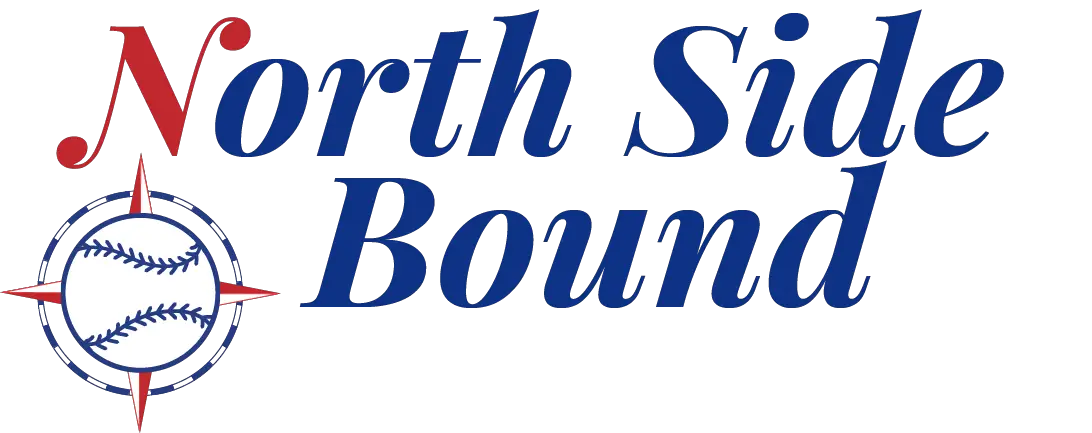Owen Caissie – Pic by Todd Johnson
The first full week of the second half is now in the books in and it was a lot of fun for me as I spent every day but Sunday in Beloit. I got to talk to a lot of players, some of whom I have not met before, and I also get to talk to a lot of familiar guys that I’ve seen throughout this year. I also took a lot of pictures which you can find over on our Facebook account as there is an album for each day.
One of the most interesting themes of the week that I talked about with several players was how big of an adjustment High-A has become. It used to be the most players thought that moving from High-A to Double-A with the biggest step in development. There’s even an old adage that that goes, “Call me when they get to AA.“ All that meant was that was the best level of talent and the biggest test of a prospect skills is at Double-A.
Now, I’m not so sure.
What has changed everything is that there is no short season between rookie league and Low-A league anymore. That used to be a key stop for some players on their way up the ladder. It might’ve just been for a few games or half a season, but it provided a much needed cushion to move up the system. Now that there is no short season league anymore, that’s that cushion is gone.
One of the things we saw a lot last year in Low-A that was extremely reminiscent of short season ball was a lot of poor defense and poor decision making in the field, at the plate, on the mound, and on the bases. We also saw a lot of guys chasing at pitches out of the zone at Low-A and even guys struggling with offspeed routinely. There were a lot of mistakes being made. Most prospects at Low-A spent almost all of 2021 in Myrtle Beach, and still many of them came back for a second go around. A few went to South Bend the last few weeks of the season when we saw DJ Herz, Pablo Aliendo, and Yohendrick PInango arrive in High-A.
What I am seeing this year is a lot of college guys that are going to Myrtle Beach and just dominating the competition eventually get promoted to South Bend. And it’s not been an easy adjustment for them. Some of the things that are different is that the strike zone is a little tighter. The ball tends to fly a little better here in the Midwest than it does along the coast where the Ocean winds affect the flight of the ball. And the competition is just a little better. Hitters aren’t going to chase as much so pitchers have to be in the zone more and they better be able to place at ball right where they want it or it will get hit. It has taken some of the new pitchers in High-A some time to adjust and others are still trying to figure it out.
One of the big things that I’ve noticed on MiLB TV and in-person is that not everybody is trying to pull the ball in the Midwest League. You get that more in the Low-A Carolina League, but guys that go the other way tend to thrive in High-A. It’s not like these new pitchers are coming in from Myrtle Beach and giving up bomb after bomb, but hitters here know what to do with pitches they can’t pull.
As well, we’ve seen several players this year go up to Double-A and thrive immediately. Matt Mervis, Cole Roederer, and Jake Slaughter are all doing fantastic in Tennessee. Reliever Jeremiah Estrada is doing fairly well along with fellow bullpen mate Nicholas Padilla. For swingman Dalton Stambaugh, it’s been a challenge at times and the same is true for Chris Clarke and Max Bain. Don’t get me wrong, playing at Double-A is very challenging. However, of the aforementioned players in this paragraph, all the ones that are succeeding at Tennessee all made stops at Low-A in their development.
So to wrap it up, Double-A is still going to be a challenge. But is Highs-A now the biggest challenge? I don’t think we’re going to answer that today fully and it may take a a couple more years to see just exactly how this is going to continue to play out. But you can definitely see the differences between the two levels of A ball. PCA struggled mightily for two weeks (Although that could have been injury related) and he didn’t start kicking it in gear until last week. The same for BJ Murray. It took Jordan Nwogu 6 weeks to adjust this spring. It took Owen Caissie a good month until he took off. In other words, it is a much bigger adjustment than it used to be.
Players that have adjusted well from Low-A to High-A this year include Fabian Pertuz and Luis Verdugo. They both came out in April hot, cooled off in May, and heated back up in June. It’s going to be a continuous cycle of adjustment.
Now that we are more aware of this trend, Luis Devers will be our guinea pig for the second half. It will be fun to watch a pitcher who dominated at Low-A make the jump.






